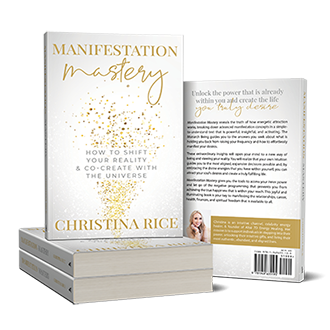The holiday season tends to be the time of year when people stray from their usual routines, indulge in extra treats, and eat more than they normally do overall. Because of that, you might find yourself on the dreaded “blood sugar rollercoaster” come holiday season. Blood sugar dysregulation can manifest in a variety of ways, including mood swings, irritability, anxiety, shakiness, “hanger”, cravings, excessive thirst, waking up throughout the night, blurry vision, headaches, and excess sweating. Many people don’t realize that food could be at the root of those symptoms, and it’s important to become aware of how what we eat affects our bodies so that we can troubleshoot it.
Side effects like those previously mentioned are obviously unpleasant in the moment, but it’s even more important to consider what constant blood sugar swings can do to our bodies longterm. Chronic blood sugar dysregulation can lead to weight gain, obesity, type 2 diabetes, and cardiovascular disease. Our blood sugar control and adrenal function are tightly linked because both the adrenal glands and pancreas help in the process of regulating blood sugar. Because of this, poor blood sugar regulation over time can also take a big toll on our adrenal glands, and eventually this might lead to HPA axis dysregulation (adrenal fatigue).
Let’s talk about how blood sugar regulation should work. When we eat food, glucose enters the bloodstream, and our blood sugar levels rise. The pancreas then secretes insulin to help reduce your blood sugar levels. Insulin tells the cells in the body to take in that glucose from the bloodstream to be used as cellular energy or stored as glycogen. When your blood sugar dips a few hours later, the pancreas secretes glucagon, which tells your liver and muscle cells to change that stored glycogen back into glucose. The cells release the glucose back into your bloodstream to be used as energy if needed, and your blood sugar is balanced again. To simplify, I like to imagine insulin and glucagon on opposite ends of a seesaw. When blood sugar is too high, insulin takes action, and when blood sugar is too low, glucagon takes action. They balance each other out.
There are a number of reasons why this process could get disturbed, resulting in huge blood sugar swings, but the main thing to understand is that foods higher in carbohydrates will raise blood sugar levels higher and at a faster rate than foods low in carbohydrates. This is why refined carbohydrates like white bread and pasta will raise your blood sugar much higher and much more quickly than something like a green vegetable. The rapid spike in blood sugar is then followed by a hard crash, and this pattern is what creates the negative symptoms you feel in your body. That’s exactly what we want to avoid!
Refined sugar consumption tends to increase during the holidays, but even if you’re not eating refined carbohydrates, even healthier sources of carbohydrates can cause blood sugar swings. In general, anything that tastes sweet will have a stronger impact on your blood sugar than something savory. Treats made from fruit, dates, honey, maple syrup, and other healthier sweeteners can still have a huge impact on blood sugar for some people, as can foods like sweet potatoes and plantains.
Luckily, there are plenty of simple ways you can keep your blood sugar balanced this holiday season so you can avoid excess cravings, energy crashes, mood swings, and even those extra holiday pounds. I’m not going to tell you to avoid all carbohydrates or desserts, because that is unrealistic and unnecessary. I do, however, want to offer some advice on how to consume them more wisely. The key thing to understand is that sometimes you can eat the same exact food in two different contexts, and your body will metabolize the food very differently in each. I want to share five easy tips for you to focus on that will help you keep your blood sugar balanced throughout the holidays (and all year long)!
- Pair whatever you’re eating with protein and/or fat. When you eat a carbohydrate with protein and fat, this helps blunt the blood sugar response so it doesn’t spike and crash. Instead, you can expect a slow and steady increase in your blood sugar (normal response to your meal), with a nice and steady decrease later on. This is why I recommend always centering meals and snacks around protein or fat. Don’t tell yourself you can’t have carbs or dessert, just make sure you have protein and fat first or alongside it. That way, anything you eat with a higher carbohydrate content won’t have as big an impact on your blood sugar levels as it would alone!
As someone who is extremely sensitive to blood sugar swings, this has been a game-changer for me. If I eat a piece of fruit or starch alone, for example, my heart races, my energy spikes and crashes, I start craving more carbs, and I usually get cranky. If I eat that same piece of fruit or starch alongside some nuts or a piece of protein, I don’t struggle with any of those side effects. This is just another excuse for ALWAYS getting toppings on my desserts! It’s also why I mostly make desserts that are high in plenty of healthy fats (like all of the desserts in my ebook), rather than high in carbohydrates. - Add cinnamon to your food! This is a delicious way to help balance your blood sugar, which is another reason why I love cinnamon-roasted vegetables. Have you noticed that I try to sneak cinnamon into as many recipes as I can?! Studies suggest that adding cinnamon to your meals, especially regularly, creates a statistically significant reduction in blood glucose levels, as well as total cholesterol, LDL, and triglycerides. This is an easy tip to utilize because cinnamon goes so well with holiday-inspired dishes! Top off your sweet potatoes, squashes, carrots, and fruits with a dash of cinnamon, add cinnamon to all of your desserts, put a few shakes into your hot cocoa, and sprinkle some in your coffee. It will taste delicious and help your body manage its glucose response!
- Use vinegar in your meals. Studies have shown that adding vinegar to a meal can help lower the insulin response while also increasing satiety from your food. Vinegar is great because it’s filled with polyphenols, but the positive effects on glucose metabolism come from vinegar’s acetic acid content. My favorite types of vinegar are raw coconut vinegar and organic raw apple cider vinegar with “the mother.” Apple cider vinegar is also great for naturally increasing stomach acid, which can aid in digestion.
Apple cider vinegar and cinnamon also pair incredibly well together, so you can get double the benefits! I love to drink hot water with apple cider vinegar and cinnamon, and I also like to use those two ingredients together in my Apple Pie Gut-Healing Gummies! These are great to snack on right before a meal to help promote a healthy blood sugar response to whatever you’re going to eat while also stimulating stomach acid production. You can also get the blood sugar balancing effects simply by tossing a little apple cider vinegar, coconut vinegar, or balsamic vinegar on top of your meal! This is why olive oil and vinegar make my favorite salad dressing. - Prioritize your sleep. Sleep deprivation has a huge impact on our blood sugar regulation. Even a single night of inadequate sleep can cause up to a 25% decrease of insulin sensitivity in healthy people, with the effects becoming more profound after even more nights of poor sleep. This is a great example of how lifestyle habits have a major influence on our metabolisms. Even if you don’t change what you eat, changing your sleep can change how your body responds to the same food! Make sure you get plenty of sleep every night to ensure your body’s insulin sensitivity is at its peak so it can properly metabolize your food.
- Take a walk after you eat. Exercise in general is important for healthy blood sugar regulation because it helps to increase insulin sensitivity, but let’s not get ahead of ourselves. Even if you can’t get all of your workouts in, it’s easy to fit in a quick walk after you eat. Studies have shown that a 10-15 minute post-meal walk is all you need in order to optimize the insulin response to your meals. Aim to take a quick 15-minute walk after your meals, especially any meals that are larger than usual or contain foods higher in carbohydrates (I’m lookin’ at you, Thanksgiving dinner).
The most important tip I could give you to balance your blood sugar during the holidays, though, is to manage your stress. High cortisol levels will increase blood sugar levels no matter what you’re eating, which is why stress management is key at this time of year. I’ve excluded this as one of my top 5 tips, though, because I wanted to give you options that were quick and easy to implement, and stress management is a lifestyle. Just something to keep in mind, though!
If you’re looking for healthy, delicious recipes to enjoy this holiday season that will keep your blood sugar nice and balanced, make sure you check out my holiday ebook, Gratitude! Not only does it contain all of my favorite paleo holiday recipes, but it also contains a ton of content similar to this blog post with plenty of tips about digestion, stress management, exercise and activity, self-care, and more! If you really want to have a stress-free holiday season (which, again, is the key to keeping blood sugar regulated,), I highly recommend getting this ebook!
And if you’re looking for plenty of blood-sugar-friendly DESSERTS to enjoy this holiday season that contain no sugar or any other sweeteners, check out my ebook, #NoSugarNoProblems: A Lovely Collection of Paleo Sweetener-Free Desserts!
I’d love to hear from you in the comments – which of these tips will YOU be implementing?!






Get Updates
And Goodies
We’re over fake “wellness.” It’s time to unlock your magic & magnetism. Are you ready to vibe higher?
Are you ready to finally optimize your health habits for real results and true health?